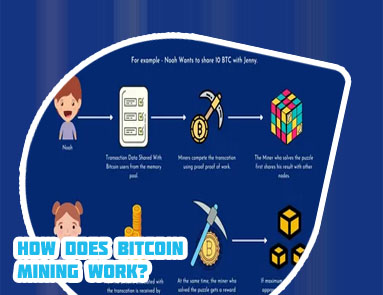- Homepage
- Best exchange to buy crypto
- How does btc mining work
- Cryptocom card
- Dogecoin to a dollar
- Bitcoin trend
- Solo crypto
- Crypto credit
- Where to buy crypto
- Dogecoin 20 where to buy
- Cryptocurrency prices
- Shiba inu coin cryptocurrency
- Doge crypto
- How to cash out cryptocurrency
- How to create a crypto coin
- What does hodl mean in crypto
- How much is pi crypto worth
- How to add bank account to cryptocom
- Time to usd crypto
- Shibusd crypto
- When will the crypto bull run end
- 270 addresses are responsible all cryptocurrency
- What is link crypto
- When to buy bitcoin
- Crypto nft app
- Apps cryptocurrency
- Defi ethereum wall
- Inflation cryptocurrency
- Cryptocom cards
- How to sell crypto on coinbase
- Bit coin price in us
- Crypto com support
- Dogecoin converter
- New crypto coins
- Can i buy dogecoin on cash app
- The crypto app
- Bitcoin cryptocurrency
- When could you first buy bitcoin
- What is crypto
- Cryptocurrency bitcoin price
- Cryptos
- Etc crypto
- How much is bitcoin
- Buy crypto card
- Cryptocom defi wallet
- Crypto market live
- Bitcoin strength indicator
- Crypto com referral
- Cryptocurrency exchanges
- Crypto login
- Crypto to usd
- Price of bitcoins in usd
- Cryptocurrency to buy
- Bitcoin crash prediction
- Where to buy shiba inu crypto
- Bitcoin one percent controls all circulating
- How to buy btt on cryptocom
- Crypto exchange
- How to withdraw money from cryptocom

How does mining bitcoin work
Bitcoin mining is a complex process that involves solving mathematical puzzles to validate transactions and secure the network. Understanding how bitcoin is mined requires knowledge of computer hardware, electricity consumption, and the mining algorithm. To help shed light on this topic, here are four articles that provide detailed insights into the process of mining bitcoin.
Unpacking the Mystery: How Bitcoin Mining Works

Bitcoin mining is a complex process that plays a crucial role in the functioning of the popular cryptocurrency. It is often shrouded in mystery, with many people unsure of how it actually works. In simple terms, Bitcoin mining is the process of adding new transactions to the blockchain and verifying them. Miners use powerful computers to solve complex mathematical problems, which in turn allows them to add new blocks to the blockchain.
One of the key figures in the world of Bitcoin mining is Satoshi Nakamoto, the mysterious creator of Bitcoin. Nakamoto's whitepaper, published in 2008, outlined the concept of Bitcoin mining and how it could be used to create a decentralized digital currency. Since then, Bitcoin mining has become a global industry, with mining farms located in countries around the world.
One of the most famous mining locations is China, which is home to some of the largest Bitcoin mining operations in the world. However, in recent years, there has been a shift towards more environmentally friendly mining practices, with countries like Iceland and Canada becoming popular destinations for miners due to their abundant sources of renewable energy.
Overall, Bitcoin mining is a fascinating process that is essential to the functioning of the cryptocurrency. By understanding how it works, we can gain a deeper insight into the world of Bitcoin and the
The Evolution of Bitcoin Mining: From CPUs to ASICs
Bitcoin mining has come a long way since its inception in 2009. Initially, miners could use their central processing units (CPUs) to mine Bitcoin. However, as the popularity and value of Bitcoin increased, so did the complexity of the mining process. This led to the development of graphics processing units (GPUs), which were more powerful and efficient at mining Bitcoin than CPUs.
Despite the advancements made with GPUs, the demand for even more powerful mining hardware continued to grow. This demand ultimately led to the creation of application-specific integrated circuits (ASICs) designed specifically for Bitcoin mining. ASICs are specialized hardware that are far more efficient at mining Bitcoin than CPUs or GPUs. In fact, today, the vast majority of Bitcoin mining is done using ASICs due to their superior performance and energy efficiency.
The evolution of Bitcoin mining from CPUs to ASICs has had a significant impact on the industry. ASICs have made it increasingly difficult for small-scale miners to compete with large mining operations. This has led to concerns about centralization within the Bitcoin network, as a small number of mining pools now control a majority of the network's hash rate. Despite these concerns, ASICs have also helped to increase the security and efficiency of the Bitcoin network overall.
Inside a Bitcoin Mining Farm: A Look at the Hardware and Operations
Bitcoin mining farms are essential to the operation of the Bitcoin network, as they are responsible for verifying transactions and adding them to the blockchain. These farms consist of powerful computers that solve complex mathematical problems in order to mine new bitcoins. The hardware used in these farms is specially designed for mining, with high-powered processors and cooling systems to ensure optimal performance.
The operations of a Bitcoin mining farm are carefully managed to maximize efficiency and profitability. The electricity costs associated with running these farms can be significant, so many operators choose locations with cheap power sources to reduce expenses. Additionally, the hardware must be regularly maintained and upgraded to keep up with the increasing difficulty of mining.
One practical use case of a Bitcoin mining farm is the story of a small-scale miner who was able to turn a profit by mining bitcoins from their home. By carefully managing their electricity costs and constantly monitoring the performance of their hardware, they were able to generate a steady income from mining. This positive result showcases the potential for individuals to participate in the Bitcoin network and earn rewards through mining.
The Environmental Impact of Bitcoin Mining: Is It Worth It?
Today, we are discussing the environmental impact of Bitcoin mining with expert ecologist, Dr. Rachel Green. Dr. Green, can you please explain to our viewers the environmental consequences of Bitcoin mining?
Dr. Green: Of course. Bitcoin mining requires a vast amount of energy to power the complex computer algorithms used to validate transactions on the blockchain. This energy consumption contributes to a significant carbon footprint, as the majority of this energy comes from fossil fuels such as coal and natural gas. Additionally, the e-waste generated from outdated mining equipment adds to the environmental burden.
Many people argue that the financial benefits of Bitcoin mining outweigh its environmental costs. What is your take on this?
Dr. Green: While it is true that Bitcoin mining can be a lucrative venture for some, we must consider the long-term consequences of our actions. The environmental impact of Bitcoin mining is substantial and cannot be ignored. As we strive to combat climate change and protect our planet, we must evaluate whether the benefits of Bitcoin mining are truly worth the harm it causes to the environment.
In conclusion, it is crucial for us to weigh the pros and cons of Bitcoin mining and consider its overall impact on the environment. Thank you, Dr. Green, for shedding light on this important issue.